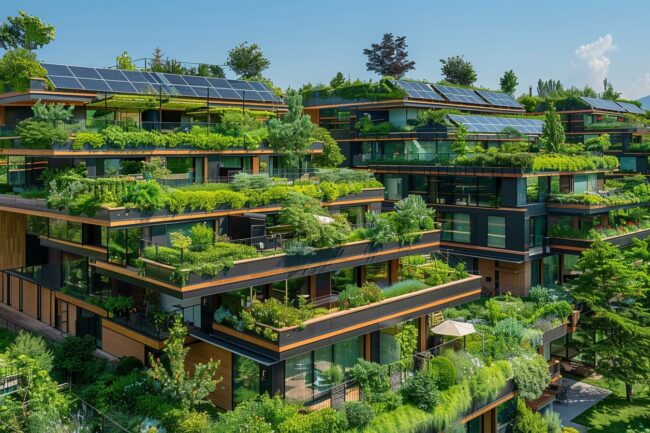As cities around the world continue to grow, the concept of sustainable urban living is becoming increasingly important. Sustainable urban living is not just about reducing carbon footprints; it’s about creating livable, healthy environments that benefit both people and the planet. This article explores key practices and strategies for achieving a sustainable lifestyle in urban settings.
1. Embracing Green Transportation
Transportation is a significant contributor to urban carbon emissions. Adopting green transportation options, such as cycling, walking, and using public transit, can significantly reduce your environmental impact. Electric vehicles (EVs) and car-sharing programs are also gaining popularity, providing eco-friendly alternatives to traditional car ownership. Cities are investing in infrastructure like bike lanes and electric vehicle charging stations to support these shifts.
2. Energy Efficiency at Home
Urban dwellers can make their homes more energy-efficient by implementing small changes. Switching to LED lighting, using smart thermostats, and investing in energy-efficient appliances can lower energy consumption. Additionally, choosing renewable energy sources, such as rooftop solar panels, can further reduce reliance on fossil fuels. Many cities offer incentives for residents to adopt these sustainable practices.

3. Sustainable Urban Housing
Sustainable urban living starts with smart housing choices. Green building practices, such as using sustainable materials, improving insulation, and installing energy-efficient windows, contribute to lower energy use and a healthier indoor environment. Urban planners are increasingly focusing on mixed-use developments that combine residential, commercial, and recreational spaces, reducing the need for long commutes and fostering community engagement.
4. Supporting Local and Sustainable Food Sources
Urban living often means relying on imported food, which can have a large carbon footprint. Supporting local farmers’ markets and urban agriculture initiatives can help reduce this impact. Community gardens and rooftop farms are becoming popular in cities, providing fresh, local produce and reducing the environmental costs associated with food transportation.
5. Waste Reduction and Recycling
Cities generate large amounts of waste, but sustainable urban living means reducing, reusing, and recycling. Many cities have robust recycling programs, but reducing waste at the source is even more effective. Practices such as composting organic waste, using reusable bags and containers, and choosing products with minimal packaging can significantly cut down on waste. Participating in community clean-up efforts can also help keep urban environments cleaner and greener.
6. Incorporating Green Spaces
Green spaces are essential for sustainable urban living. Parks, community gardens, and green rooftops not only provide recreational areas but also improve air quality, reduce urban heat islands, and support biodiversity. Urban planners are increasingly incorporating green spaces into city designs, recognizing their importance for both environmental and human health. Residents can advocate for more green spaces in their communities and take advantage of existing ones for relaxation and recreation.
7. Water Conservation in the City
Water conservation is critical in urban areas where demand is high. Simple actions like fixing leaks, using water-efficient fixtures, and collecting rainwater for gardening can make a big difference. Cities are also implementing larger-scale solutions, such as greywater recycling systems and green infrastructure that naturally manages stormwater. By adopting water-saving habits, urban residents can contribute to the sustainable management of this vital resource.

COMMENTS